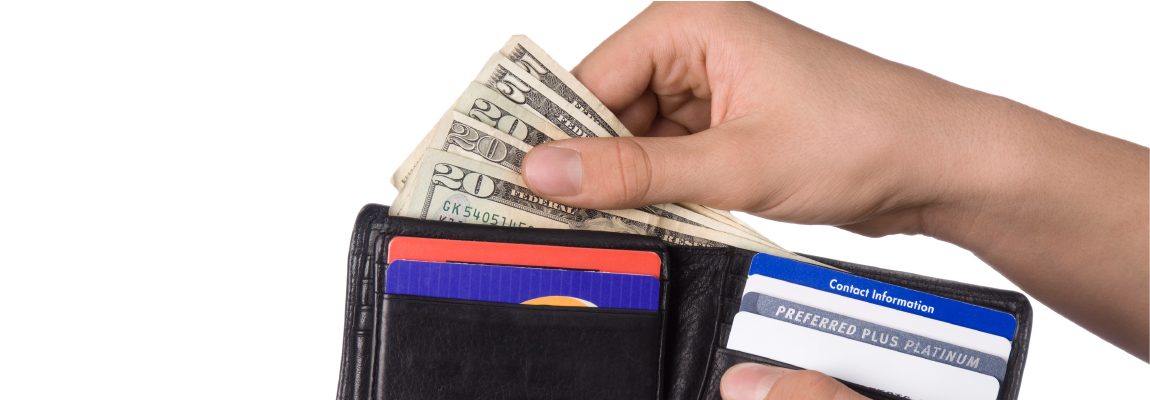In the highly commoditized printing industry, print sellers are pushing their prices lower and lower to stay competitive. But studies are now showing that customers are willing to pay more on certain things. For example, a study by Capgemini found that 81% of consumers are willing to pay more for a better digital customer experience.
Customer experience is, however, a large umbrella. What components would customers actually pay more for? Here are five major things that will make consumers want to pay a premium.
At #5: 42% would pay for friendlier service
Think your business is customer-centric? You may want to think again. Capgemini reports that there’s a huge disconnect between how companies perceive themselves (customer-centric) and how customers perceive them (non-customer-centric). It’s unsurprising then that 42% of consumers would pay for friendlier, welcoming service, according to a report by PwC.
How Much?
The report shows that consumers would be willing to pay up to a 16% price premium. But it doesn’t stop there. 63% of consumers would share more information to companies that offer a great customer experience.
Your Print Business
If you run a brick-and-mortar print shop, make sure your representatives are friendly and knowledgeable. If you have an online shop, give your customers the option to speak to a live representative by chat, email, or phone. Make them feel welcome in their customer journey.
Tip: Check out our article on customer service.
At #4: 43% would pay for more convenience
Sometimes, time is worth more than money. The University of British Columbia discovered from an experiment that people were happier after spending money on time rather than on a physical item. Understandably, PwC found that 43% of global consumers would pay for greater convenience.
As a disclaimer, not all consumers fall in the time-over-money camp. There is nevertheless a significant percentage that do.
How Much?
Although there is limited research on this in the print industry, research in other industries show a willingness to pay for greater convenience. Lux Research reported that in some new business models, clients are willing to pay more than an 11% premium on each added level of convenience for food.
Meanwhile on eCommerce websites, clients are increasingly willing to give out information in order to conveniently access gated content.
Your Print Business
Here are two ways you can make ordering print easier for your customers:
- Offer simple services like basic file fixes (e.g. adding bleed)
- Make sure that your website is easy to use (e.g. your product selection is well organized).
Tip: For an example of an easy-to-use print website, check out SinaLite, where clients who have signed up can place an order in two minutes.
At #3: 47% would pay for faster delivery
Consumers’ expectations of acceptable delivery times are changing. Dropoff’s survey found that 47% of US consumers have paid for faster delivery (same day or next day). The numbers for Millenials are even higher at 54%.
As for global data, here’s a chart by PwC showing how soon customers expect their goods to arrive, and how many of them would pay more for faster delivery.
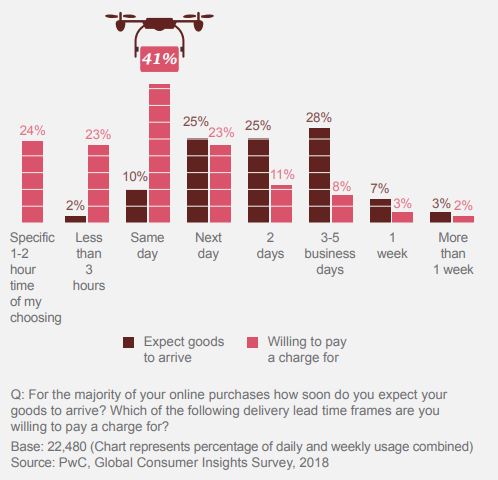
How Much?
Bizrate Insights found that this varies depending on the product or service, but for US and Canadian consumers, the average is $15.78 for same day delivery.
But there’s a twist. Interestingly, eCommerce consumers are more willing to wait longer for an item if they get free shipping. In fact, 74% of US and Canadian eCommerce shoppers believe delivery cost is more important than timing. This is an important point to consider when offering online printing services.
Your Print Business
Having a faster delivery time could be what tips the scales in your favour when your clients are deciding between you and a competitor. Offer them different options for quick production turnarounds and fast shipping times at a premium cost, especially for products like flyers, business cards, and postcards.
At #2: 66% would pay for more sustainable goods
Purchasing a product that is labelled as sustainable gives clients positive psychological affirmation, increases their loyalty to the brand, and more recently gives them a sense of prestige. Nielsen found that 66% of global consumers would pay more for it, with Millennials at 73%.
How Much?
A graph from a study by McKinsey & Co. shows how much consumers are willing to pay a “green premium” by category. Printers who supply packing boxes and labels, take note of how packaging is the highest category in the chart.
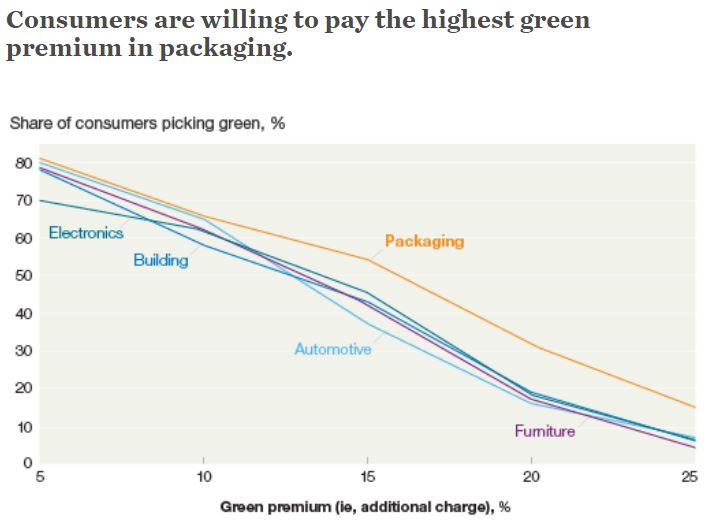
Your Print Business
Research. Find out whether you’re already providing sustainable products (e.g. products printed on recycled paper), or if there are simple ways to incorporate sustainable practices into your workflow. Then, market your brand with it. Let prospects and customers know your sustainability story or promise.
At #1: 70% would pay for personalization
In a market of mass production, personalized products are making a comeback. A personalized product or service not only meets your clients’ needs better, but it also makes them feel that you care about them, which builds customer loyalty and turns them into ambassadors for your brand.
How Much?
The following graph from Deloitte’s Consumer Review shows that over 70% of consumers would be willing to pay a 10% premium or more on a customized product or service.
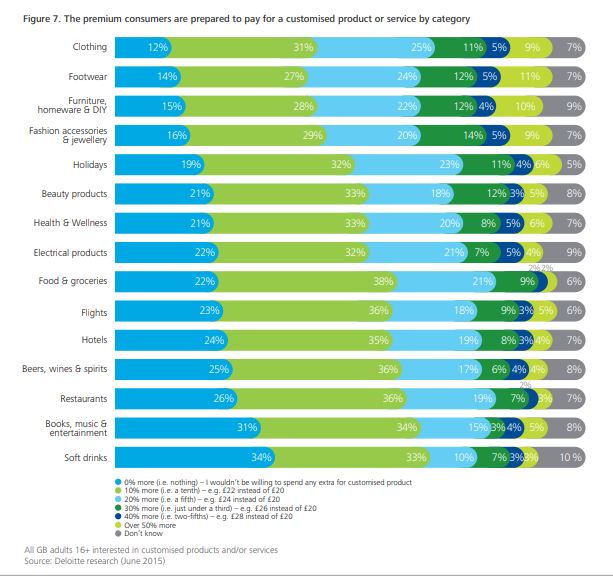
In addition,
- 1 in 5 who are interested in personalized products would pay 20%,
- 22% of consumers would share data for it, and
- 48% are willing to wait longer for it.
Your Print Business
Print sellers have an advantage in the personalization trend because printing is by nature highly customizable. One strategy to customize your client’s experiences through personalized emails and direct mail. 40% of US consumers who received a customized experience purchased something more expensive than what they originally planned, according to a report by Segment.
In addition, you can also offer custom printing. This doesn’t mean shoveling customers with more print options – it means letting customers present you with their needs first.
What else?
Are there other premium products and services that consumers would pay more for? Nielsen’s Global Survey shows that consumers’ perception of what’s considered “premium” (cost at least 20% more than average price for the category) covers a lot of different attributes.
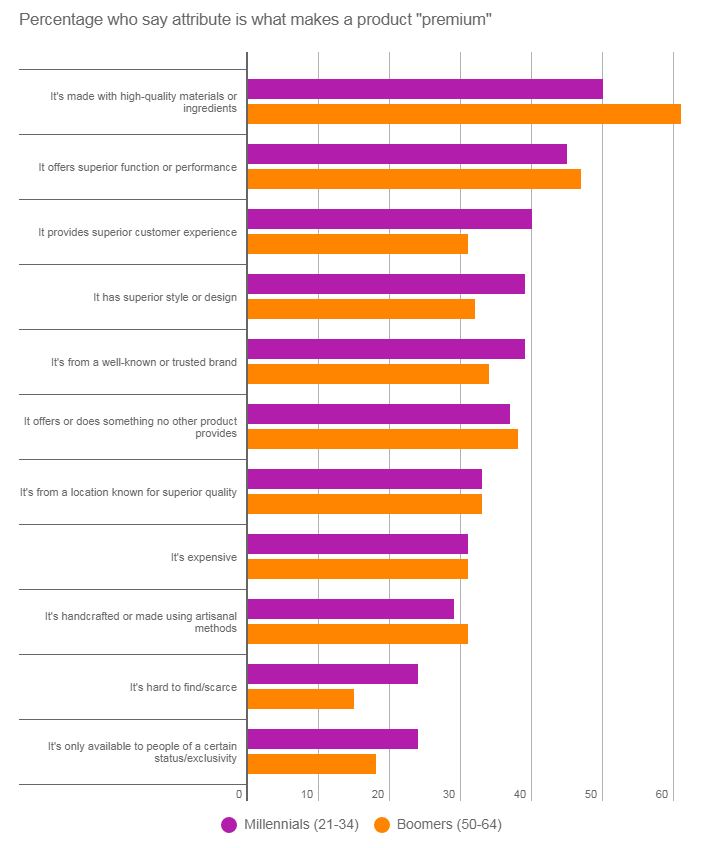
Knowing the consumer preferences of your own clients is even more important than understanding the data here. We’ve provided a starting point; it’s up to you to develop the best strategy for your own product pricing.
If you enjoy reading business insights like this one and want to learn more about growing your print business, we encourage you to subscribe to Printer Success.
